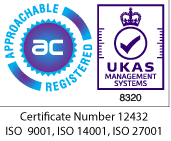An Overview of the Current Satellite Communications Industry
The Satellite Industry is in a Period of Momentous Transformation
The satellite industry is going through a period of momentous transformation with the emergence of new entrants and new technologies in every segment of the value chain.
For decades satellite communications have been dominated by a handful of GEO satellite manufacturers, satellite operators and ground segment manufacturers with almost a cottage-industry-like network of service providers and value-added manufacturers (BUCs, LNBs and antennas). This has been a linear and predictable business model with entirely proprietary technologies.
We now see the emergence of new Non-Geostationary Orbit (NGSO), or multi orbit players in LEO, MEO and HEO building completely vertically integrated systems. This shift has significantly driven down capacity pricing: the price of satellite bandwidth for data services has dropped 77% over five years according to analysts Novaspace, formerly known as Euroconsult.
Starlink, as the first to market, is making waves by disrupting market sectors historically monopolised by the established GEO players such as maritime, aero and enterprise connectivity. Two years ago, the industry would have dismissed Starlink's impact on maritime or aero connectivity segments. The sentiment was that Starlink has ‘no CIR’ (Committed Information Rate) and therefore would not be considered ‘reliable’ for mobile or critical communications. This notion has since been overturned and the naysayers have paid a price with a significant impact to revenues in maritime—the cruise industry in particular—with Starlink now making inroads into aviation and previously inviolable segments like defence.
Starlink has also revolutionised satellite manufacturing, leveraging new technologies such as 3D printing to mass-produce satellites at a phenomenal rate, reducing costs to between $250,000 and $500,000 per satellite.
The race is on, with Elon Musk’s Starlink trying to acquire as many subscribers as possible before the challengers like Amazon's Kuiper and Telesat's Lightspeed emerge. Forrester's Digital has predicted that SpaceX’s Starlink broadband-by-satellite system is likely to end 2025 with around 8 million customers (it ended 2024 with approximately 5 million), a remarkable growth rate when you consider that each of the leading GEO satellite operators typically have around 25,000 enterprise VSAT terminals activated.
We also see the emergence of Small Sat and MicroGEO manufacturers disrupting traditional commercial models with innovations like satellite-as-a-service. This technology provides additional or targeted capacity for defence and government in hotspot areas.
Twenty-five years ago, building and launching a satellite would have cost at least two billion USD. Now we see them being built and launched at a fraction of that cost (circa $60 million), reducing the price per gigabit equal to or below fibre.
Starlink has also been fundamental to reducing launch costs. In 1981, launch costs were $147k per kilogram of payload. Starlink’s current generation of rockets have brought this down to $2300 and with the introduction of their new Starship rocket, Elon Musk is talking about a price as low as $100 per kilogram. This scale of reduction in launch costs is driving the democratisation of space by allowing new use cases for space to emerge.
The satellite industry is also seeing unprecedented consolidation, coopetition and collaboration, creating a range of new offers to consumers, enterprise and governments. Significant transactions include:
- In April 2024, SES announced its intention to acquire rival Intelsat. If and when this completes, it will be a significant transaction
- In May 2023, Viasat completed its acquisition of Inmarsat
- In October 2023, Eutelsat and OneWeb completed their merger transaction
- In March 2024, prior to the SES announcement, Intelsat extended its partnership with competitor Eutelsat-OneWeb for LEO services.

We are also witnessing the most significant digital transformation in the satellite industry’s history. The telecommunications industry underwent this transformation years ago, and the satellite industry is fast catching up by digitising and virtualising its infrastructure and moving away from proprietary analogue systems to standards compliant digitised IF and software-defined networking. This convergence will integrate terrestrial and space-based systems.
Indeed, this convergence of terrestrial and non-terrestrial systems is reflected in the 3GPP standards for 5G and 6G. Release 18 will build on the work which began in Release 17 on integrating and optimising satellite access into terrestrial networks. This will continue to push the satellite sector towards greater standardisation and away from its proprietary roots.
The release of the Apple iPhone 14 saw satellite access integrated into a mass market mobile device, providing users with an additional lifeline in the event of an emergency—no longer requiring cellular coverage to send an SOS. A new entrant, AST SpaceMobile, is looking to launch new direct to device satellite mobile services that will ultimately allow users to access mobile internet anywhere in the world. AST SpaceMobile has already established relationships with AT&T and Verizon, as well as being part-owned by Vodafone. Starlink’s latest generation of satellites are also direct-to-device ready as they look to capture a share of this new market.
Geopolitical tensions have accelerated the adoption of satellite technologies as countries increase defence spending. According to Novaspace, in 2023 government space budgets reached a record-breaking $117 billion, marking a growth of over 15% compared to the previous year. This trend is set to continue as countries bolster their military capabilities amid ongoing conflicts like Ukraine and regional flashpoints.
With subsea cables being cut in hostile and contested regions, having a satellite-based backup is becoming increasingly vital to security. With the convergence of terrestrial and satellite networking standards, we are seeing the adoption of SD-WAN where fibre links are backed up with an automatic satellite failovers.
Current Challenges
Despite these advancements, the satellite industry faces several challenges. Private equity and venture capital investment in the satellite industry has significantly declined over the last two years in terms of deal value. Investments totalled just $1.19bn in 2023, down more than 87% from $9.48bn in 2022. In 2024, there was a degree of investment ‘cold feet’ and scepticism around so called ‘new space’ entrants.
The lack of financial liquidity is forcing companies to reduce headcount in an attempt to remain profitable and meet shareholder expectations. This creates long-term uncertainties as companies attempt to innovate, adopt new technologies and pivot into the future landscape.
Ground segment manufacturers have been slow to innovate next-generation technologies. For example, software-defined modems were desirable for larger satellite operators in the mid 2010s, and yet this has been a slow reality. Furthermore, power supply and consumption of gateways and data centres is an increasingly significant cost consideration with the growth in distributed satellite access.
Next generation constellations have faced delays partly due to pandemic manufacturing issues, even as Starlink aggressively acquires subscribers.
Political factors like interference, jamming, and geofencing add complexity to the industry. In September 2023 it was alleged that Elon Musk had implemented geofencing in Ukraine thereby thwarting an attack by the Ukrainian armed forces on a Russian military position in Crimea.
Service providers must diversify their offerings to maintain revenue streams and competitiveness, and the industry is exploring the adoption of Generative AI and addressing ongoing supply chain challenges. Increase energy and fuel costs since the start of the Ukraine conflict have further exacerbated supply chain costs from component contract manufacturers.
This cocktail of uncertainty, makes the satellite industry an extremely exciting but also volatile space to operate in the coming years.
Conclusion
The satellite industry is undergoing significant transformation, which will continue throughout this decade. This period of change will bring considerable disruption, with some companies disappearing or being acquired. Cambridge Management Consulting is here to help companies in the satellite industry seize opportunities and ensure they are positioned for success in this evolving landscape.
How Cambridge MC can Help your Business
At Cambridge Management Consulting, we have the expertise and experience to guide companies through this transformative period. Our independent and agnostic perspective helps identify the business case for change and we support you in both strategy and execution to address these challenges.
With our experience in the satellite industry, we help companies to capitalise on new opportunities position themselves for success amid disruption.
If you would like to find out more about our services and talk about your current challenges, please get in touch with the satellite team using the form below.
Contact - Satellite Article
Subscribe to our Newsletter
Blog Subscribe
SHARE CONTENT












